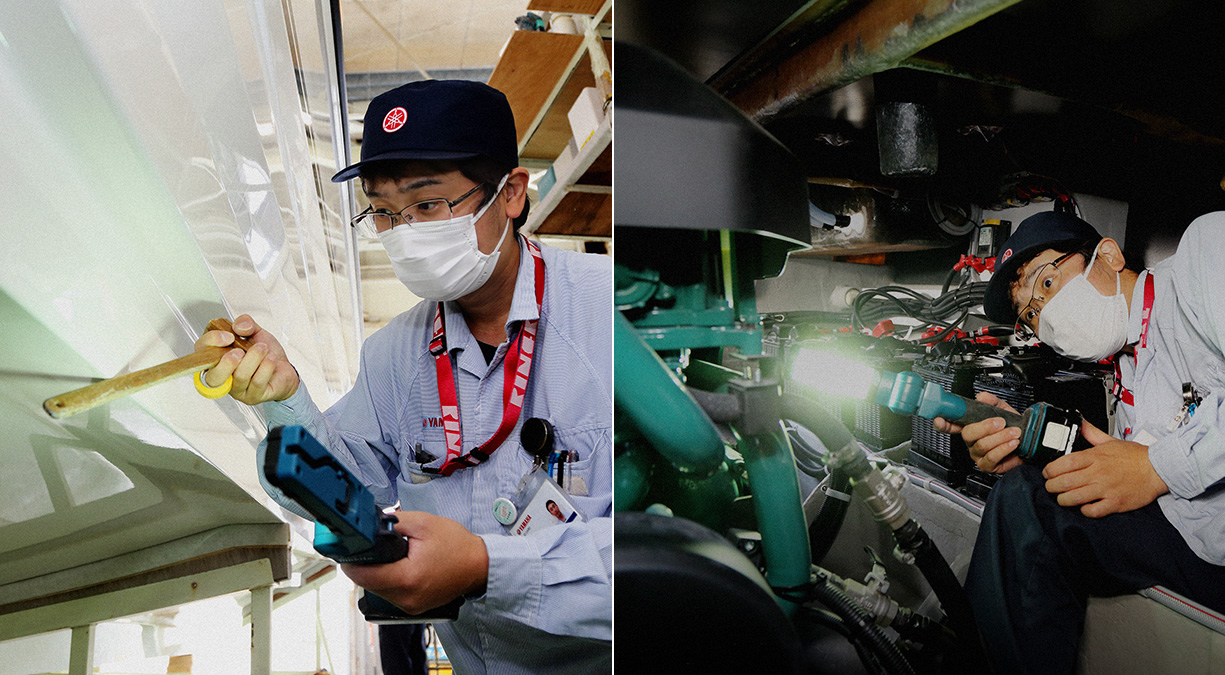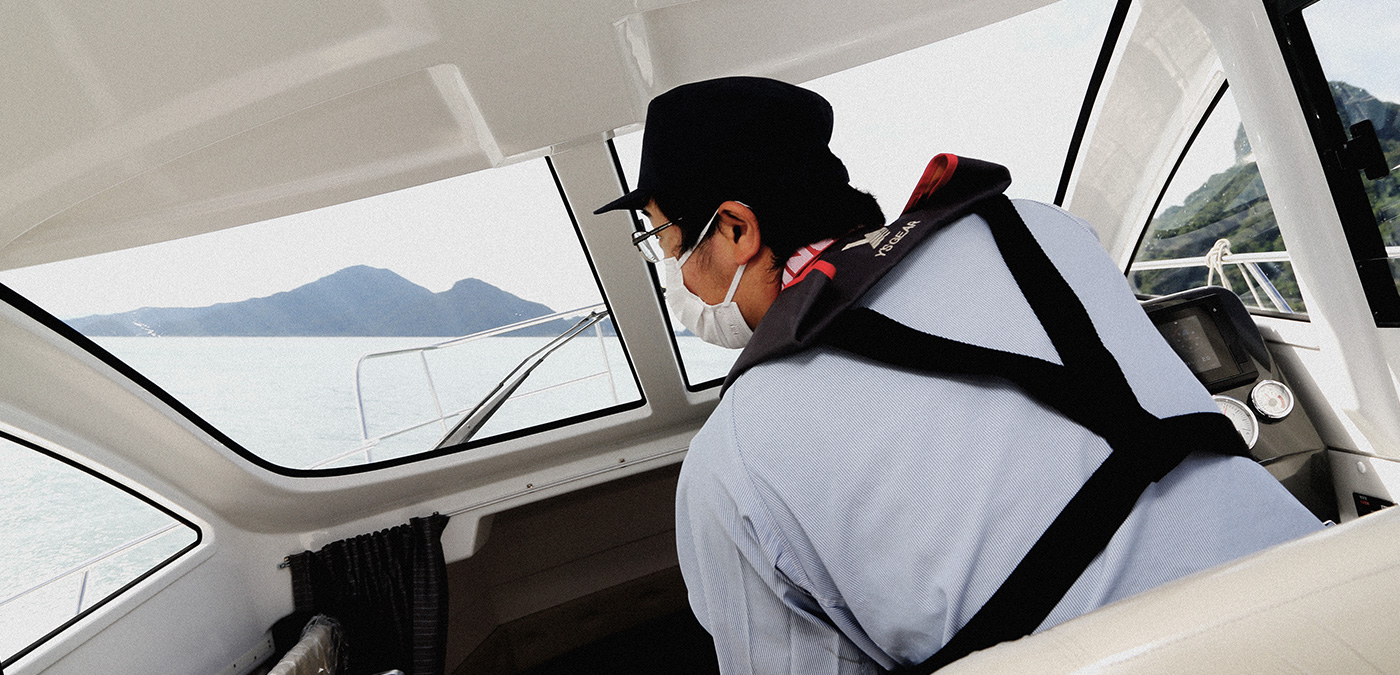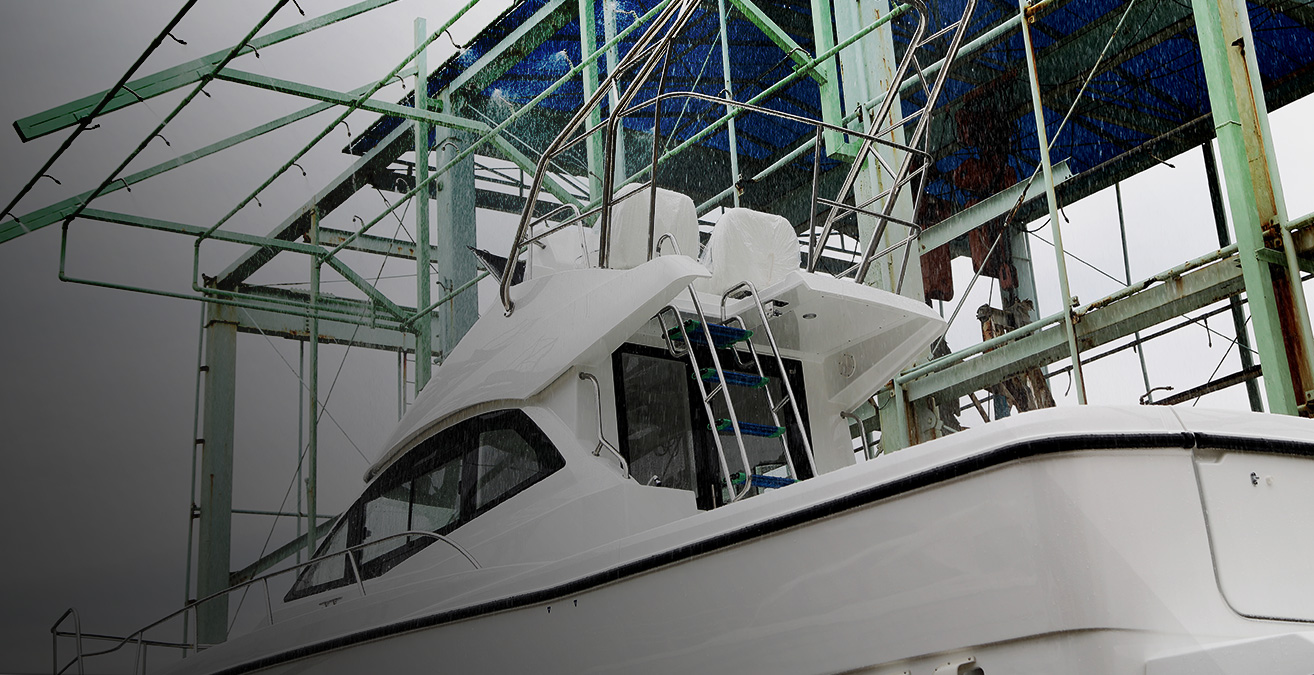Responsibility and pressure for giving the All-clear
The completion inspection is the final process before handing the boat over to the customer.
The slightest imperfection missed by staff performing this inspection could lead to a quality complaint by the customer, so completion inspections need to be conducted thoroughly from the customer’s perspective in order to find any exterior damage, paint variations, excessive sealing material, or other issues.
Specialists shine LED lights from various angles to check every inch of the finished surface so that they can identify any paint defects or minor scratches.
They also tap every section of the hull with a hammer to check for bubbles behind the paint or delamination between layers of cloth. Even the slightest change in sound does not escape the specialists’ ear, as they utilize each of their five senses to their best ability.

There are no manuals available that outline how to check the condition of FRP layers by tapping the hull with a plastic hammer.
Using a hammer to detect the condition of the hull several centimeters deep from the slight change in sound when there are bubbles or delamination present is similar to a CT scan in a way.
There is always other work being performed at production plants, which means the area is certainly not a quiet place. Being able to identify any delamination or reinforcing material conditions in such an environment is an extremely difficult task, and is a ‘technique’ that symbolizes the sense of responsibility in making sure each and every fault is found before work can be considered complete.
Specialists are able to shut out all the other sounds around them, and focus solely on the sound that the hammer makes.

Large ships are actually taken out for an on-water test.
Here the boat is tested under conditions that are far tougher than those experienced in normal use—sudden acceleration, deceleration and turning—to find even the slightest characteristic that feels out of ordinary.
More than just the engine speed during acceleration or deceleration or the speed of the boat, specialists can identify every faint sound or unnatural vibration.
This not only means characteristics that can be measured in numbers, but also requires human “senses” that are honed to perfection.








